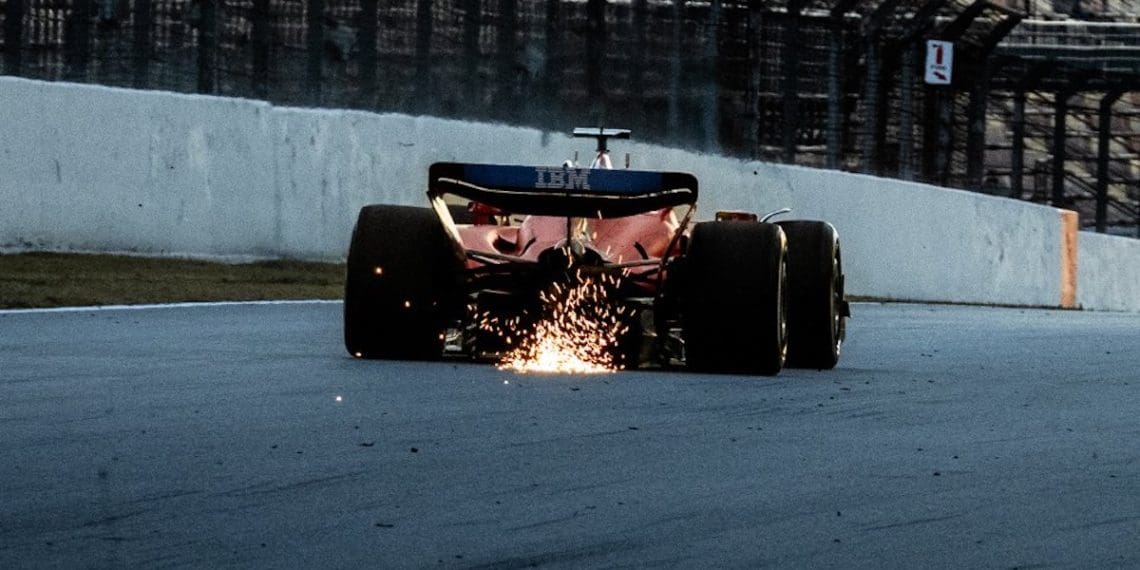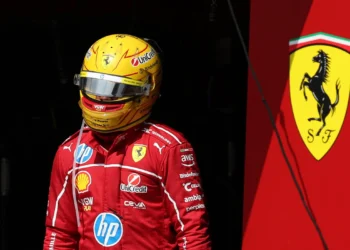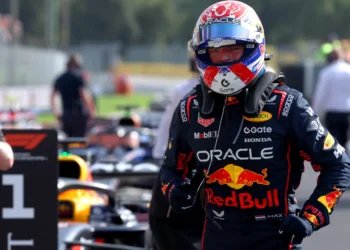In Formula 1, the difference between title contention and midfield mediocrity often comes down to one thing—technological superiority. While raw driver talent and strategy play vital roles, aerodynamic development, simulator precision, and wind tunnel efficiency determine a team’s ability to evolve throughout a grueling season.
For 2025, two teams have made major advancements in these areas—Ferrari and McLaren. With cutting-edge wind tunnels, state-of-the-art simulators, and improved Computational Fluid Dynamics (CFD) models, both teams have strengthened their championship credentials, leaving Red Bull and Mercedes scrambling to keep up.
Ferrari’s Wind Tunnel & Simulator Upgrades: A Game-Changer?
Ferrari has quietly built an engineering powerhouse, and their recent multi-million-dollar investment in wind tunnel and simulator technology has pushed them to the forefront of F1 development.
In mid-2024, Ferrari upgraded its Maranello-based wind tunnel, replacing its outdated metal rolling road with a rubber-based one. This small but crucial change significantly improved the accuracy of aerodynamic simulations, especially for cars operating at low ride heights—a critical factor under F1’s ground-effect regulations.
The benefits were immediate. Ferrari’s mid-season upgrade at the Spanish Grand Prix initially caused an unexpected aerodynamic imbalance, but with real-time wind tunnel testing and simulator refinements, the team quickly corrected the issue. This responsiveness gives Ferrari a huge advantage over Red Bull, which has struggled with correlation problems between wind tunnel data and track performance.
Ferrari has also invested heavily in a next-generation simulator, developed by UK-based Dynisma. Unlike traditional F1 simulators, which have higher latency, Ferrari’s system operates at one-eighth the response time of its competitors.
Why does this matter?
- Drivers receive near-instant feedback—allowing Charles Leclerc and Carlos Sainz (and soon Lewis Hamilton) to replicate real-world driving conditions with extreme precision.
- More effective setup adjustments and race strategies, as data is instantly analyzed to mirror real-world physics.
- Advantage in adapting to tire wear, fuel loads, and weather conditions before race weekends.
Simply put, Ferrari’s simulator is the most advanced in Formula 1 today. The combination of wind tunnel accuracy and simulator realism puts the Scuderia in prime position to challenge for the 2025 title.
McLaren’s Wind Tunnel Revolution: The Secret Behind Their 2024 Resurgence
After years of struggling with outdated facilities, McLaren made a bold move—abandoning Toyota’s Cologne wind tunnel and upgrading its own Woking-based facility in mid-2023.
The results were immediate. McLaren’s aerodynamic refinement, particularly on high-downforce circuits, helped Lando Norris and Oscar Piastri secure multiple race wins in 2024, vaulting the team into the championship conversation.
With McLaren’s new wind tunnel now fully operational, the MCL39 is expected to be one of the most aerodynamically efficient cars on the grid. The biggest advantage? McLaren can now test, refine, and implement aero upgrades faster than ever—something they lacked when relying on Toyota’s external wind tunnel.
“Now we can develop at a rate we couldn’t before. We don’t have to wait weeks for wind tunnel results; we get real-time data,” said McLaren Technical Director Peter Prodromou.
Much like Ferrari, McLaren’s driver-in-the-loop simulator has also been significantly upgraded, with higher processing speeds and real-time race modeling, giving Norris and Piastri a vital edge in pre-race preparation.
Red Bull & Mercedes: Falling Behind in Tech?
Red Bull’s Wind Tunnel Woes
For all of Red Bull’s dominance over the past three seasons, one lingering issue remains—its outdated Bedford wind tunnel.
Unlike Ferrari and McLaren, Red Bull still struggles with wind tunnel-to-track correlation, leading to unpredictable aerodynamic performance. Their new Milton Keynes wind tunnel isn’t expected to be fully operational until late 2025, leaving Max Verstappen and Sergio Perez at a potential disadvantage.
Additionally, Red Bull’s simulator isn’t as advanced as Ferrari’s, meaning setup adjustments and pre-race strategies may lack the real-world accuracy needed to adapt quickly.
“We’re working on improvements, but Ferrari has the best simulator on the grid,” admitted Red Bull’s Chief Engineer Paul Monaghan.
Mercedes: Can They Regain Their Edge?
Mercedes has been developing a new wind tunnel, but it remains unclear how quickly they can close the gap to Ferrari and McLaren. Their 2024 season was plagued by correlation issues, and 2025 will be a critical test of their technology investments.
However, one area where Mercedes may have an edge is in driver adaptability. With Lewis Hamilton leaving for Ferrari in 2025, George Russell will lead the team, with Mercedes’ advanced AI-driven simulation tools helping refine driving styles in real-time.
The Big Question: Will These Upgrades Deliver Championships?
Wind tunnel and simulator advancements aren’t just about improving lap times—they’re about long-term title contention.
With Ferrari and McLaren now leading in F1’s technological arms race, their ability to develop and refine their cars throughout 2025 gives them a major advantage over Red Bull and Mercedes.
Key Takeaways:
✅ Ferrari’s state-of-the-art simulator and wind tunnel upgrades give them the best pre-race preparation tools on the grid.
✅ McLaren’s Woking wind tunnel revolution has dramatically accelerated their aerodynamic development.
✅ Red Bull is playing catch-up, with its new wind tunnel not ready until late 2025.
✅ Mercedes is in a rebuilding phase, with unknown competitiveness heading into 2025.
The real test will come at pre-season testing in Bahrain, where teams will analyze whether their technological advancements translate into on-track dominance.
If Ferrari and McLaren’s upgrades deliver as expected, F1 fans could witness one of the most unpredictable, tightly contested championship fights in years.













